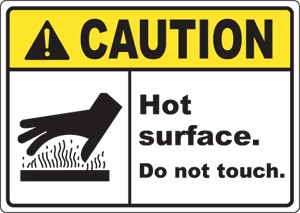Here at Worbo Inc., we are often asked by our customers to design and supply insulation components for unusual or unique high temperature applications. We pride ourselves on our ability undertake these unique challenges and to deliver effective thermal barrier solutions.
A critical step to determining the most effective type of thermal barrier system is to understand the mode of heat transfer within the application. It is generally recognized that heat travels from areas of higher temperatures to areas of lower temperatures but it is important to also understand the mechanism for this heat flow. Heat may be transferred by one of three (3) possible modes: thermal radiation, convection or conduction. Depending on the application it is often feasible that heat transfer will occur through more than one of these modes.
Our engineering team must review each application individually to gain an understanding of the modes of heat transfer and how they relate to the required thermal objectives. Once armed with this information, our engineers will begin the detailed design phase to determine the appropriate material construction, thickness and type of thermal barrier that will produce the desired outcome.
Thermal Radiation (Electromagnetic Radiation)
All objects or materials that have a temperature greater than absolute zero will emit electromagnetic waves through a process called thermal radiation. Here’s how it works à all matter (above absolute zero) contains kinetic thermal energy that is produced by atoms and molecules interacting with each other. The continuous interaction between charged particles within these atoms leads to the emission of protons radiating energy away from the boundary surface in the form of electromagnetic radiation. It is important to note that this electromagnetic radiation can travel through an air space and it does not require the presence of matter for its propagation.
Examples of thermal radiation would include the heat that can be felt from a racing car exhaust even a few feet away or the intense heat that radiates from a molten iron blast furnace.
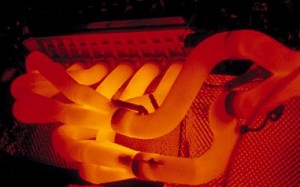 |
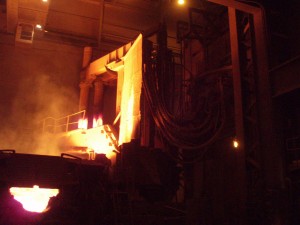 |
An effective way to inhibit the transfer of heat by thermal radiation is with a reflective insulation barrier that reflects electromagnetic radiation away from its surface. The property of a material that characterizes its ability to prevent radiation heat transfer is called surface emissivity. The lower the surface emissivity the more effective a barrier is at reflecting radiant heat. Worbo’s Eko-ThermTM blanket material is an excellent example of a very good reflective insulation barrier. It is supplied with a shiny aluminized surface that has a very low emissivity and is capable of reflecting up to 90% of radiant heat away from its surface.
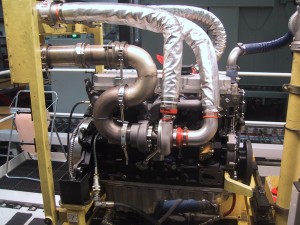 |
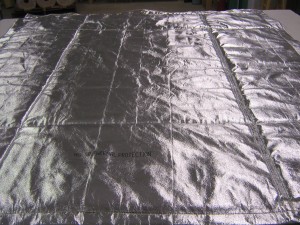 |
Conduction
Unlike thermal radiation that occurs through an air space, conductive heat transfer only occurs when two bodies (with different temperatures) come into contact with each other. A body with a high temperature has an abundance of thermal energy that is generated from the rapid collision of particles within the material. Thermal conduction occurs when fast-moving particles of a warmer material collide with slower-moving particles of a colder material. These collisions cause the slower moving particles of the colder material to speed up thus increasing its temperature, and the faster moving particles of the warmer material to slow down resulting in a lower temperature.
An example of conductive heat transfer occurs when an employee sustains a skin burn from accidental contact with a hot process line.
When considering conduction it is important to understand that not all materials are created equal. Some materials are more effective at conducting heat than others. The ability of a material to transfer thermal energy is measured though a property called thermal conductivity. Materials with a low thermal conductivity such as fiberglass or Styrofoam have a lower capacity for heat transfer and therefore these materials are often utilized as thermal insulators. Worbo Inc. offers a wide variety of effective thermal insulators that exhibit very low thermal conductivity including our InsulmatTM and Cool-SkinTM products. What differentiates these Worbo products from residential grade materials is that they are effective at elevated temperatures. Unlike residential insulation materials these products won’t break down when exposed to extreme temperatures.
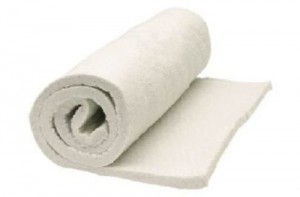 |
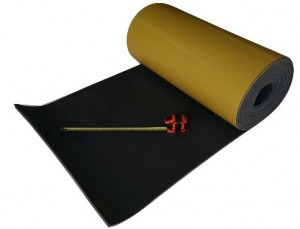 |
Convection
The final mode of heat transfer is convection. Convection is a means of transferring thermal energy into or out of an object by the physical movement of a surrounding fluid (liquid or gas). When a fluid is heated it expands and becomes less dense and lighter than the surrounding fluid. The lighter fluid then rises. The cooler fluid rushes in from the sides where it is heated and rises creating a convective column. This process repeats itself, resulting in a continuous convection current in which warmer fluid moves up and away from a heat source and cooler air rushes down toward the heat source.
An example of convective heat transfer occurs when an overhead crane charges a furnace in a steel producing facility. The extreme heat from the charging furnace rises in a convection column toward the crane which can expose the cranes power cables to intense heat.
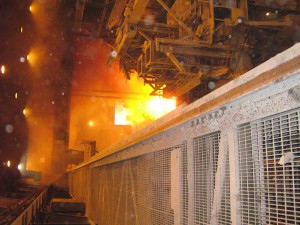
Among one of the most innovative of Worbo’s thermal protection solutions is the development of a unique festoon cable protection system. This system has been implemented in steel mills around the world and has proven to be a very effective solution to prevent damage to overhead crane power cables from extreme convective heat. In addition, this robust system provides an excellent barrier to protect against molten metal splash.
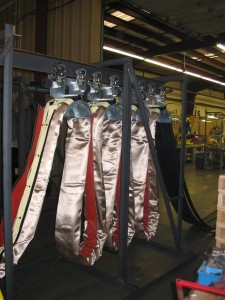
Often a thermal protection system will need to address all three (3) modes of heat transfer to produce the best possible outcome. Worbo Inc. has an extensive array of materials each with its own unique thermal properties, specifically designed to mitigate the potential negative impact of heat transfer. The best possible insulation system will quite often utilize a combination of select Worbo materials to create a successful insulation solution.
The engineers and designers at Worbo Inc. understand the complex nature of high temperature problems and they are very good at analyzing specific applications to develop effective solutions.

